We had been warned not to underestimate Angola. We crossed into Angola at Ruacana and within 200meters of the border we had done 3 u turns and were lost. There are no road signs. Finally we choose a track which seemed to be going north, the track disappeared, rocks appeared, then soft sand, then bush and so we traveled north heading for London through deepest darkest Africa, not really sure where we were or if we were in fact even on a road.
Enlarge
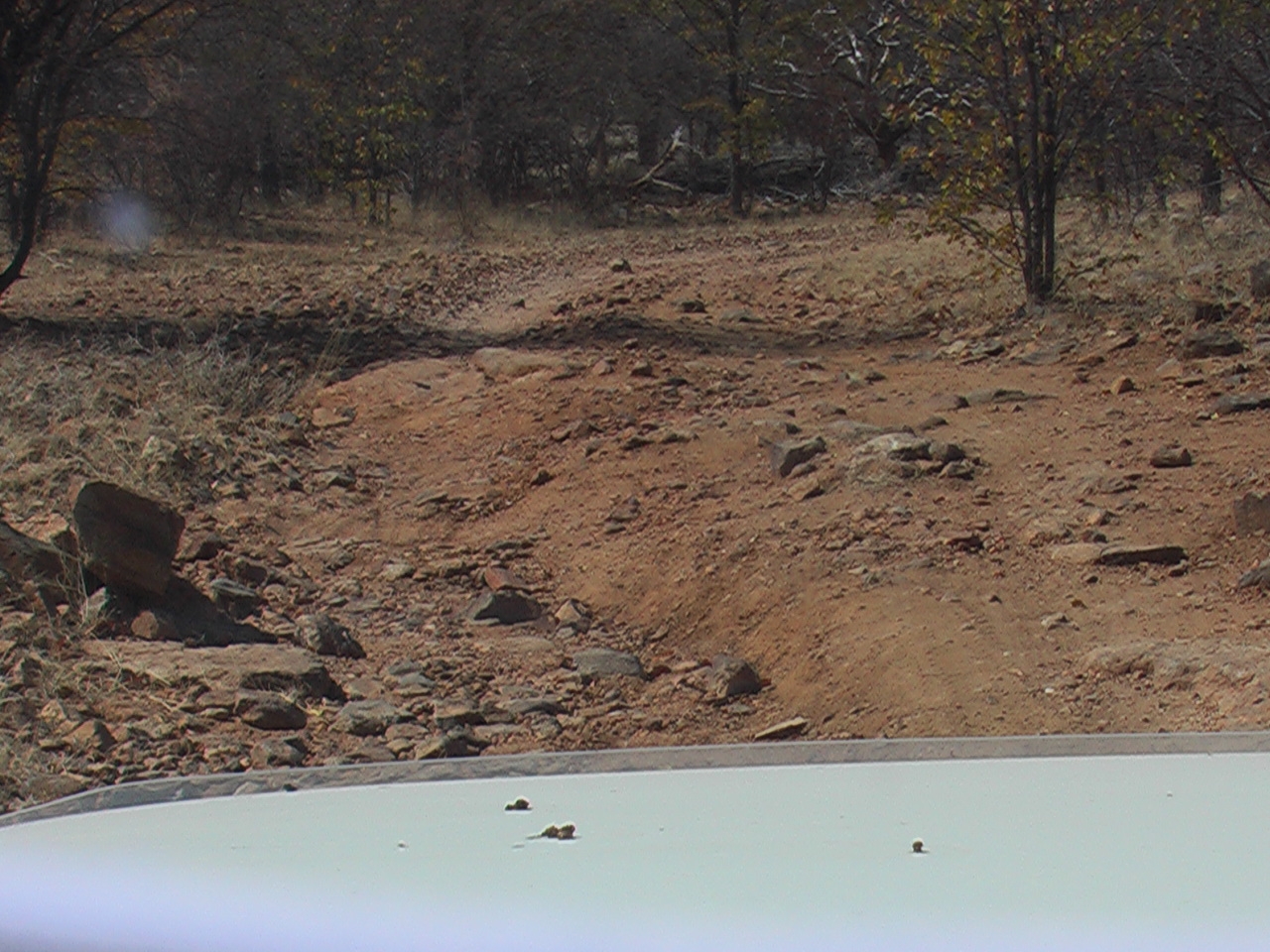
Adventurouspirits
Back to the village, flip a coin and choose a track, we seemed to be making progress, still heading north, our GPS doing fine and finally after 7 hours of driving we had done 90km. Time to find a place to bush camp.
Enlarge

Adventurouspirits
Angola has known more wars over the past 46 years than any other African country. It is said that there are as many landmines as people in Angola. The government estimates there are 80,000 survivors of landmines explosions in the country with at least 800 deaths or serious injuries still recorded annually. The shoulders of the roads are notorious for hidden land mines and we had been warned not to leave the roads, but too camp right on the roads. We found a track just off the road and did what we were told we camped on the track. We had a restless night and we got up with the sun to start our next day in Angola. We had to travel slowly no more that 30-40k/hr. so as not to damage the cruiser on the numerous potholes and corrugations.
Enlarge
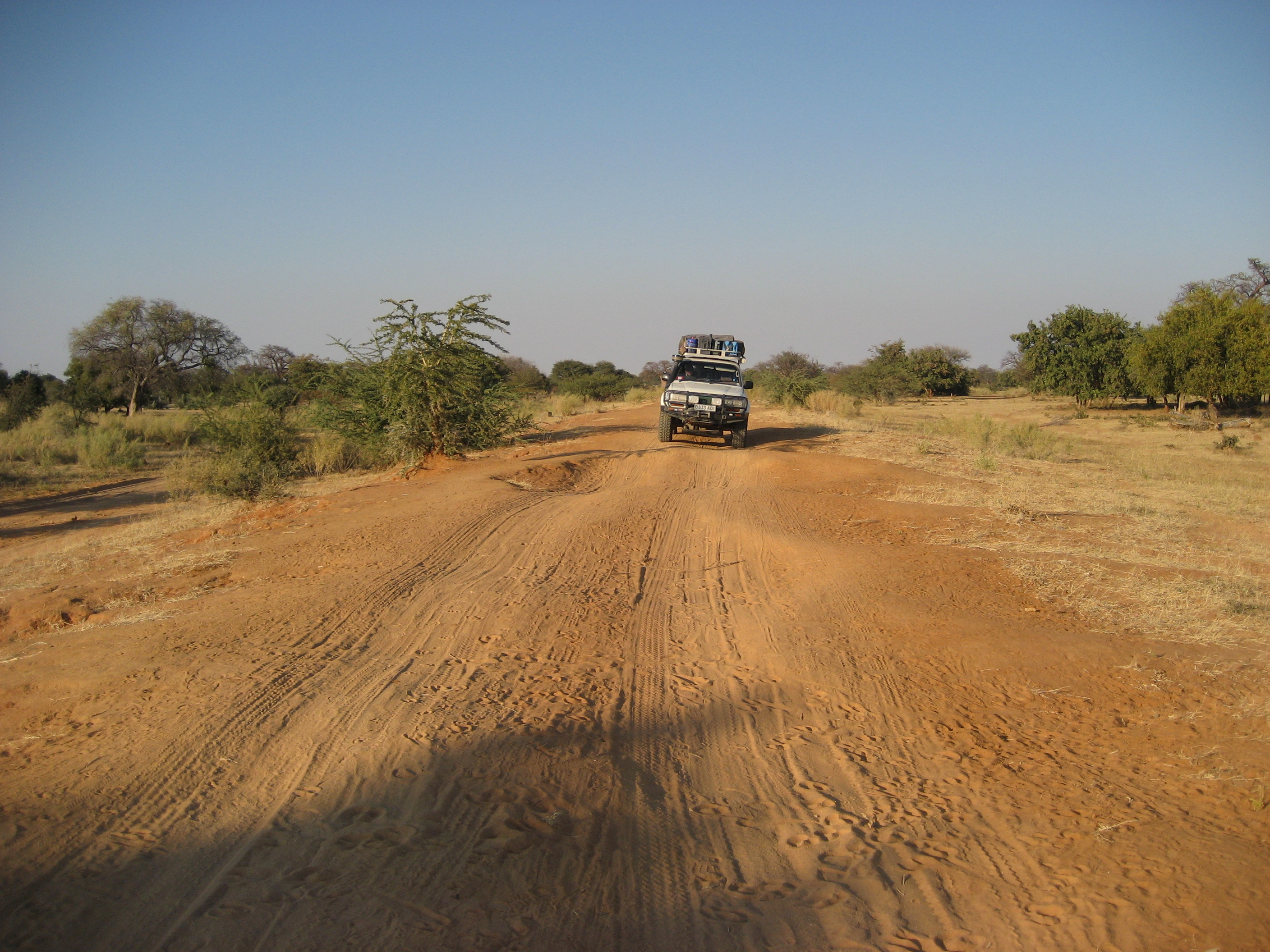
Adventurouspirits
The Chinese are rebuilding the roads all over Angola as there way of gaining access to Angola’s vast mineral wealth and other resources.
Enlarge

Adventurouspirits
Angola has only known peace since 2002. Most Angolans have only known war and it appears they face insurmountable challenges to rebuild. However many villages we passed had at least one new building; a school and if not, the school children simply sat under the large trees to get some protection from the strong African sun.
Enlarge

Adventurouspirits
On our 2nd day in Angola we met up with a group from South Africa who were touring Angola with a guide (UIR Adventures). They were friendly and kindly invited us to join them bush camping that night, which we readily accepted. Marius the tour leader found a clearing in the bush and told us that we can camp on land that has been “worked, crop fields and quarries” as they are safe from landmines, which was good news as I was not that comfortable camping on the road at night.
Enlarge

Adventurouspirits
Thinking we are safe from the scourge of landmines we confidently head out the following morning. Before reaching the main road our path is blocked by a landmine clearing crew. My blood turned cold and the hair on the back of my neck stood up. Had they not been there we could have driven right over whatever they were exposing. I didn’t even want to think about what the consequences might have been. I took the treat from landmines very seriously from that point on. There are 15,000,000 landmines in Angola one for each citizen. They cost a few dollars to plant and thousands to locate and render harmless. Will Angola every be free of the threat they pose.What an insidious weapon it is. They need to be banned!
Enlarge
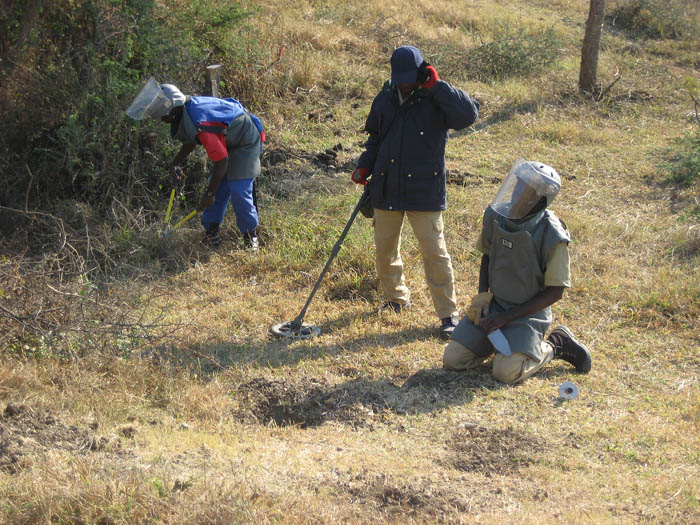
Adventurouspirits
Enlarge

Adventurouspirits
The roads in Angola are indescribable, everyone told us Angola has the worst roads in Africa and I would suggest perhaps the world. The 40 year civil war has completely destroyed the country’s infrastructure. The border control officer had told us it would take us about 6 hours to cover the 300km’s between Ruacana and Lubango, it took us three days. Lubango is a large bustling town, which has the distinction of being one of three cities in the world, which has a gigantic open armed statue of Christ standing guard on the mountains surrounding the city. (The other two are Rio de Janiero and Lisbon) .The infrastructure and economy of this city and its surroundings were greatly damaged following Angola’s independence in 1975 by the departure of most Portuguese settlers, by the effects of two decades of civil war, and by bombing raids by South African planes.
Enlarge

The camping facilities’ were very primitive and after three days of very hard driving and rough camping, we booked into a sprawling room, where we spent a luxurious night enjoying, hot running water, movies, and a good mattress. That evening a Luandan couple introduced themselves to us, our Landcruiser having engaged their interest, they were friendly and helpful, a characteristic we found to be universal amongst the local inhabitants.
Lubango is located on the Leba plateau at an altitude of 1700m making it the highest cities in Angola. Our next destination was the coastal hamlet of Namibe on the Atlantic Ocean. You head for the coast zigzagging down the impossible hairpin bends of the “Serra de Leba” to the baobab trees and bushveld below, then on into the grey, stony desert. Tom was in the passenger’s seat hanging on as I whizzed around the hairpin bends down into the valley. The Serra de Leba pass is a breathtaking ride by anyone’s standards and what makes the drive even more of a thrill is the fact that you are able to travel more than 100 kilometers by road without running into the giant potholes experienced everywhere else in the country. This is due to the fact that the south-west of the country was barely been touched by the fighting that raged through most of Angola for 26 years.
Enlarge

Photo Credit unkown
The south-west area of the country is one place where for a moment you can step back and contemplate something which is sometimes hard to imagine – what a peaceful Angola might look like. That afternoon we arrived in Namibe and headed south to Flamingo Lodge in the northern reaches of the Namib Desert. As we turned south, we were treated to spectacular desert canyons and fields of Welwitschia plants, which were growing everywhere, as far as the eye could see.
Enlarge

Adventurouspirits
Flamingo Lodge is a remote fishing lodge owned by a South African, in fact the one who assisted us obtaining an Angolan visa. The lodge can only be reached by 4X4 and is sought out by serious deep sea fishermen. The lodge loomed ahead of us on the beach track like a mirage. Our way was marked by whale vertebrae and ribs.
Enlarge
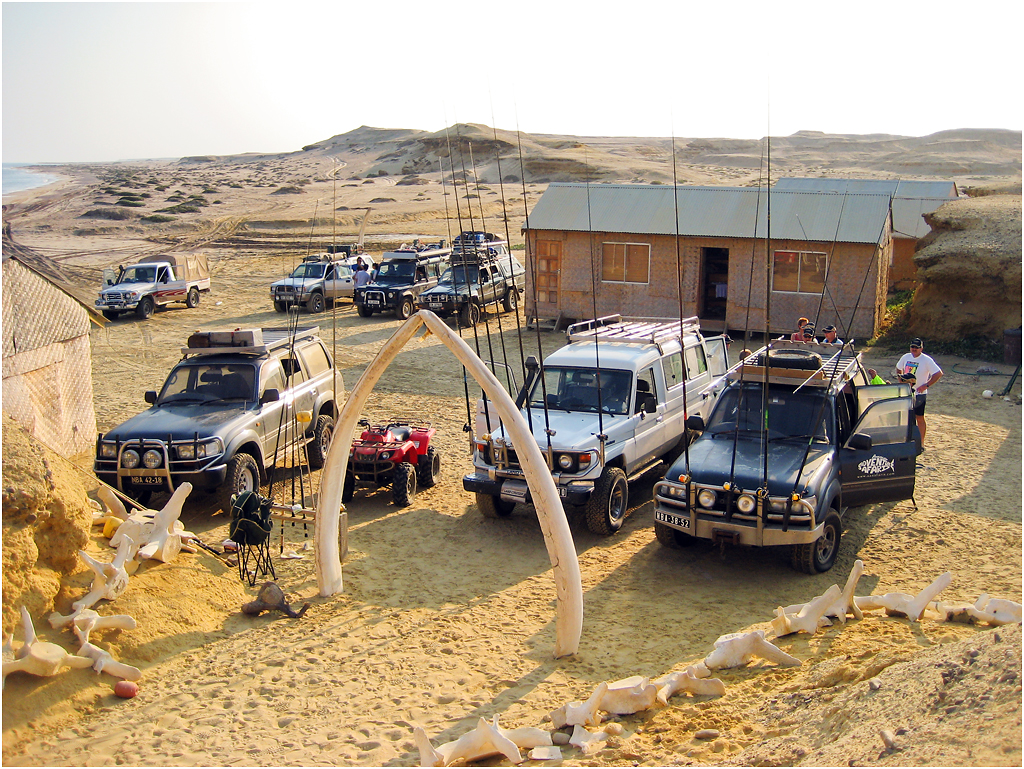
Adventurouspirits
We camped here for a few days enjoying the stillness, remoteness, cool ocean breezes and desert vistas.
Enlarge

Adventurouspirits
We headed for Luanda following the coastal road. It would take us 5 days before we would enter Luanda. We spent the first few days and nights night with a fun group of fellow travellers from South African fishermen who were in search of the “big one.”
The journey north passed through villages and communities where we could mingle with locals, wonder through markets where donated clothing was sold, as well as food, charcoal and many other basic goods and supplies.
Enlarge

Adventurouspirits
Enlarge

Adventurouspirits
Enlarge
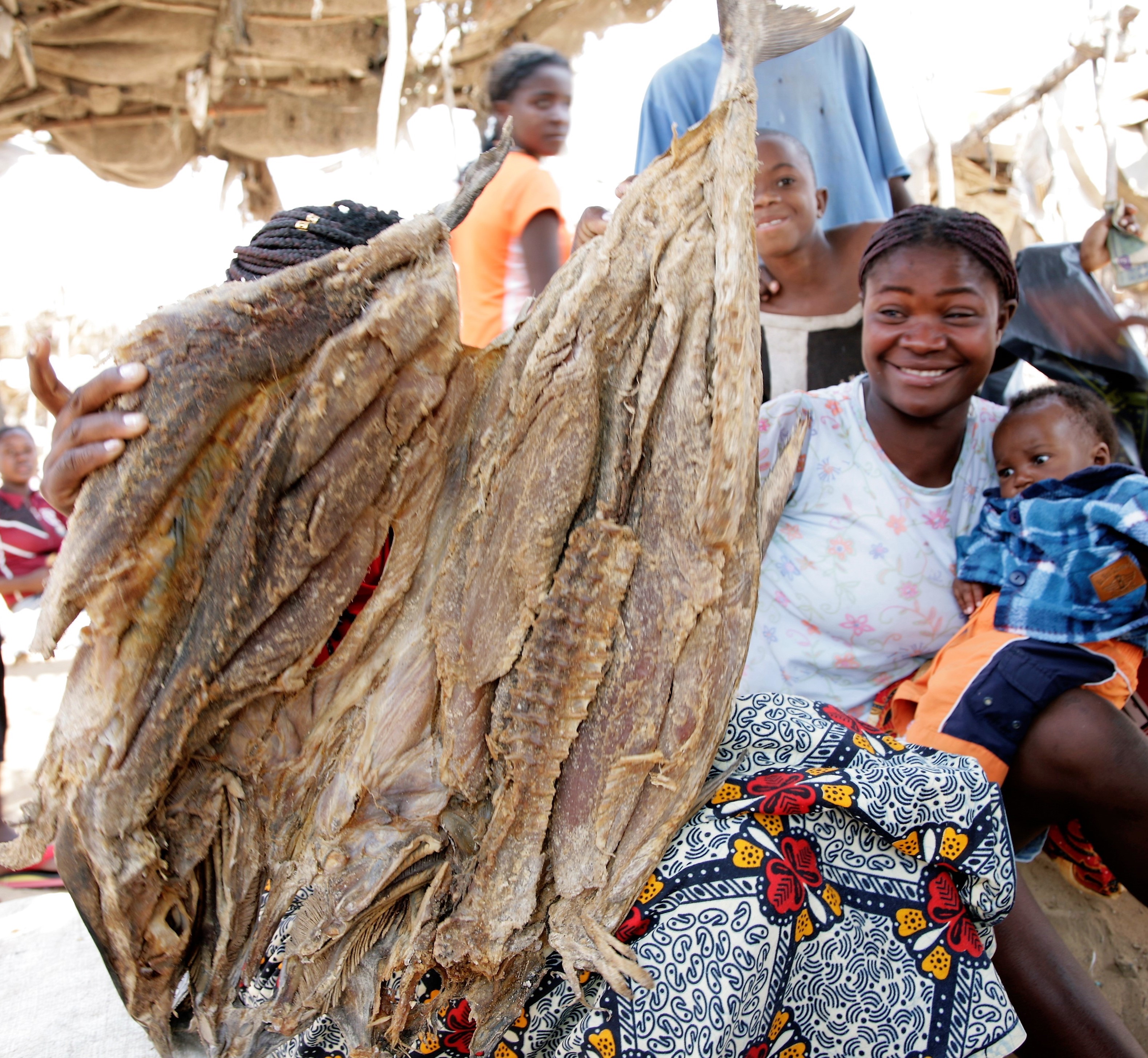
Adventurouspirits
Enlarge

Adventurouspirits
Enlarge

Adventurouspirits
Enlarge
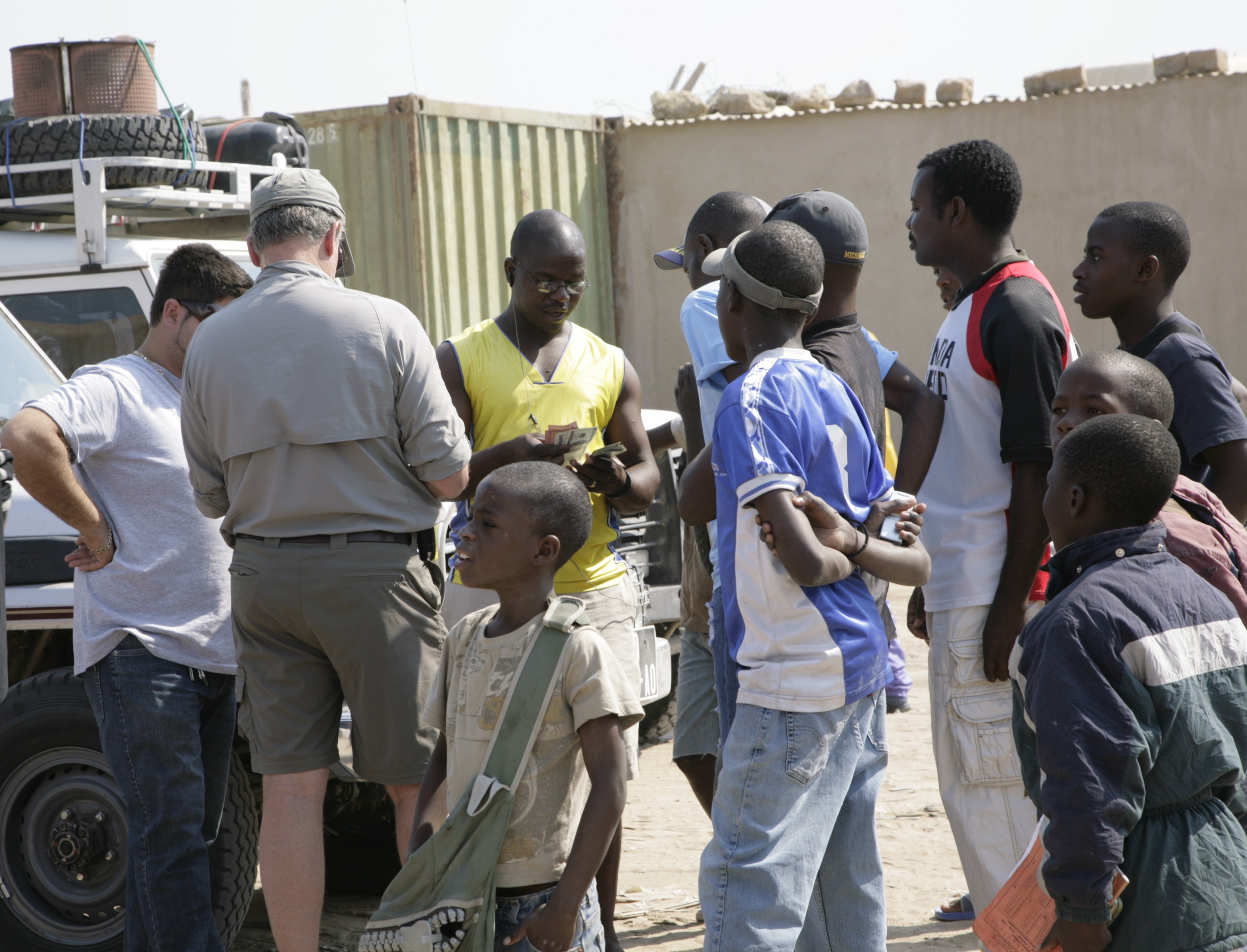
Adventurouspirits
Enlarge
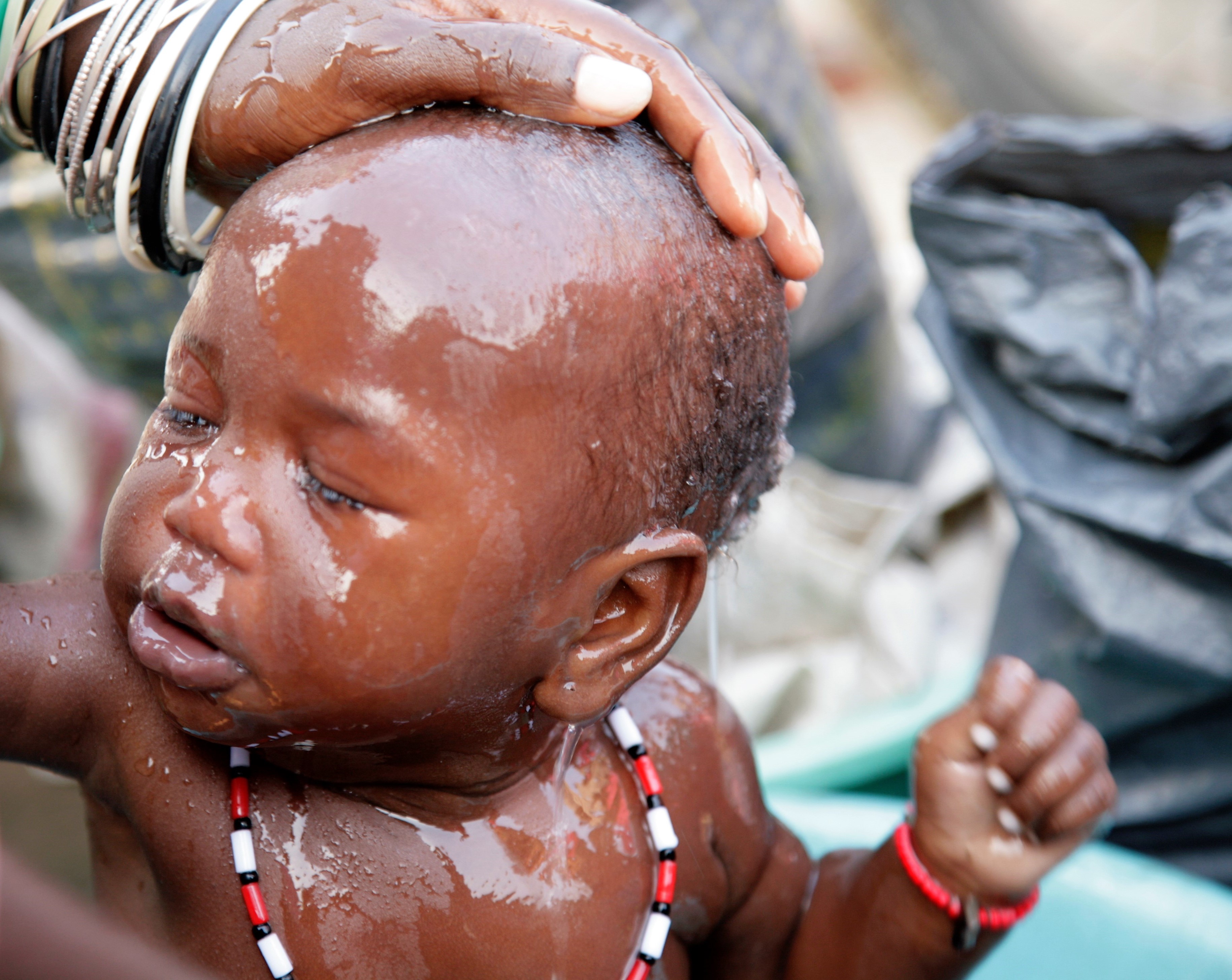
Adventurouspirits
Enlarge
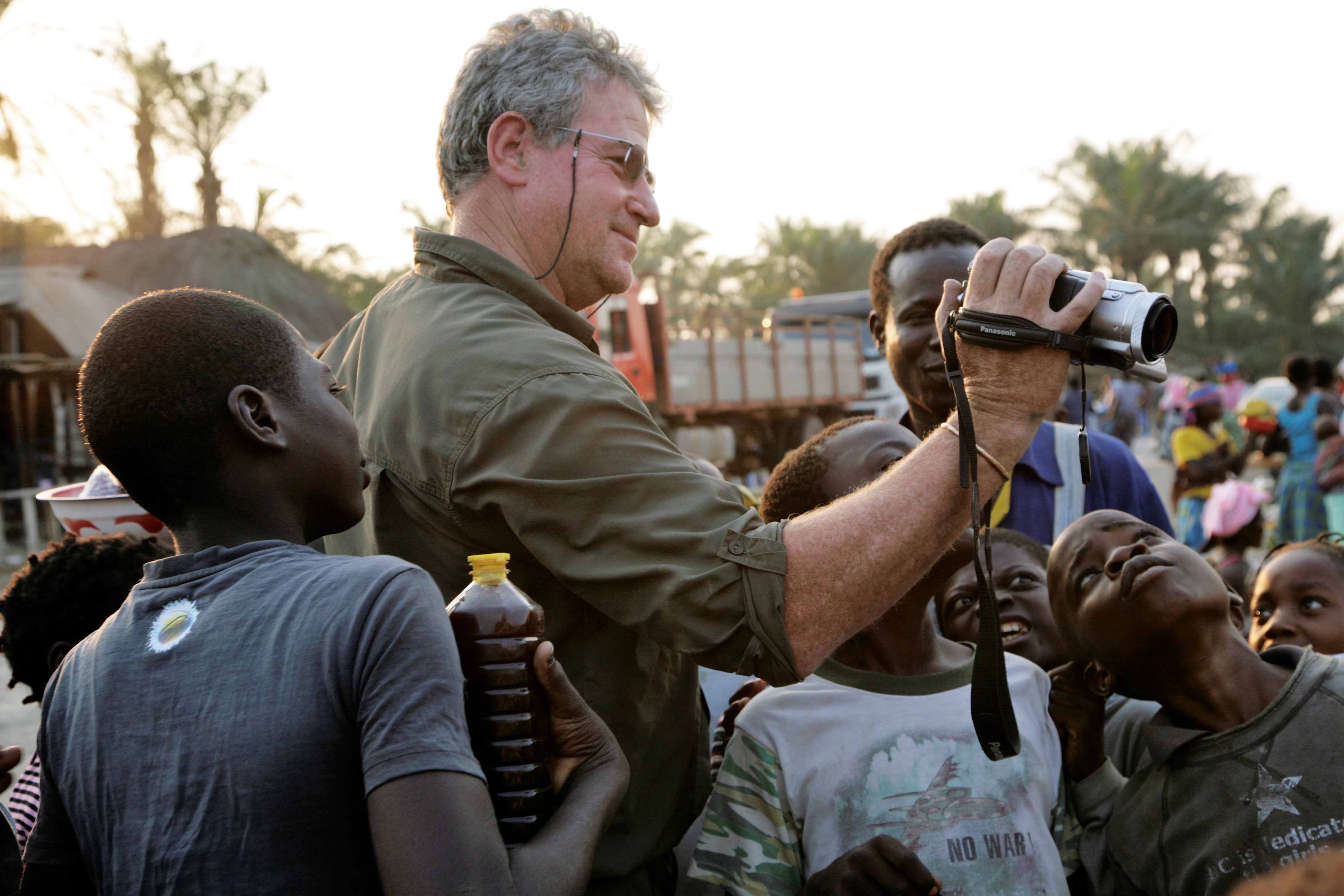
Adventurouspirits
We choose to drive up the coastal route to Luanda, that way we could avoid the badly damaged land-mined main road. Our concern was the reportedly difficult section, worse we were told than the infamous “Van Zyl” pass in Namibia. Just how much worse can the road get than what we driven already? We were both quite anxious as we headed towards this approximately 30km of track over a mountain range. First, we had to spend a night camping on the road in the bush. We both slept so well on the side of the road. Really remote, no traffic and no people not even a cow or goat. We set off early as we were anxious to get to the bad road and get through it safely. We estimated it was about 20km ahead. It was not long before we knew that we were definitely on a bad road.
Enlarge

Adventurouspirits
However, after several days we had finally conquered the mountain pass and in a little village, back with people we felt good.
Enlarge
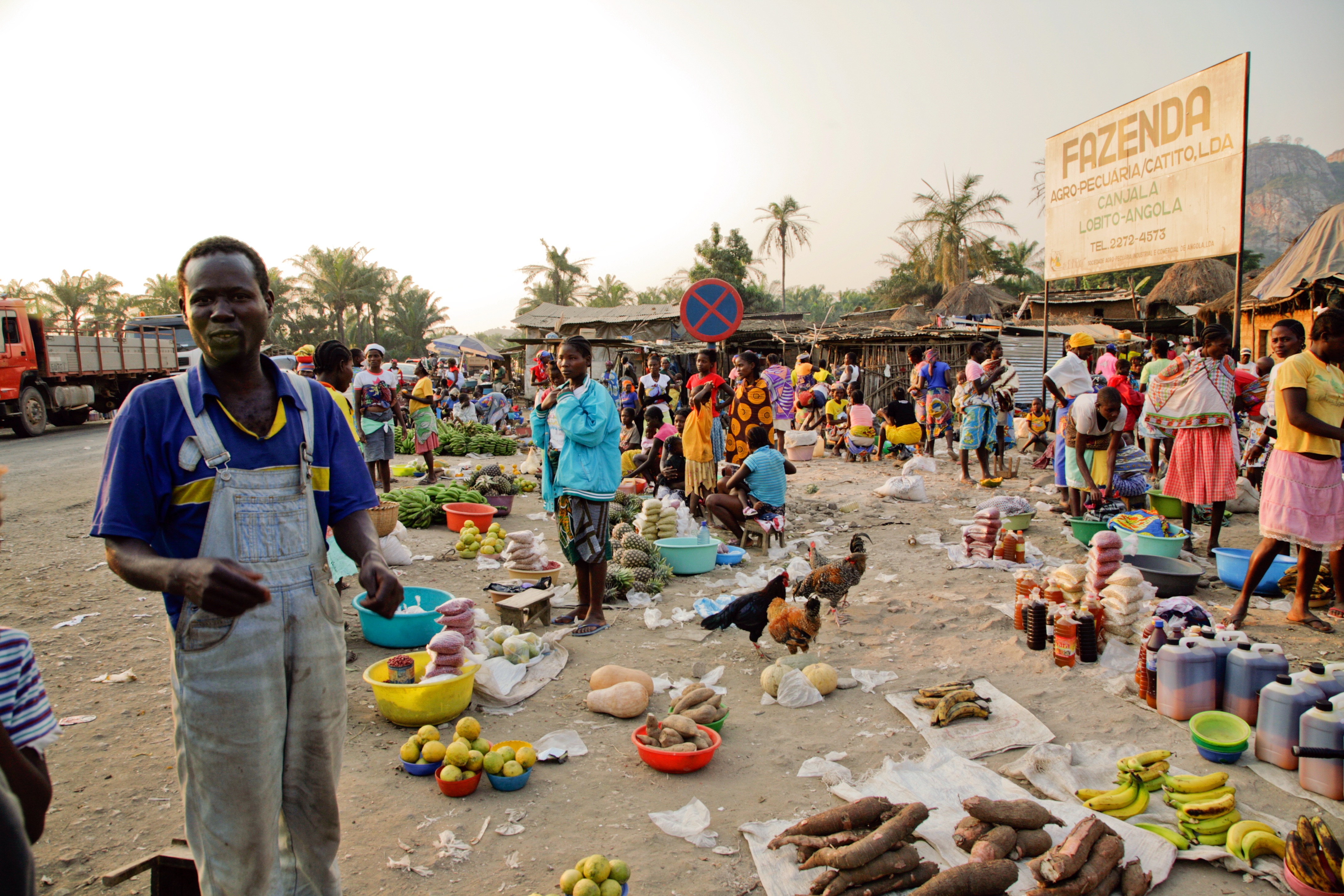
Adventurouspirits
From there a newly paved Chinese highway whisked us towards Luanda. We always tried to enter major cities in the morning so that we had plenty of time to get orientated before dark. So we decide to spend the night at another fishing lodge located on the banks of the Kwanza River about a 2hr drive from Luanda.
Enlarge
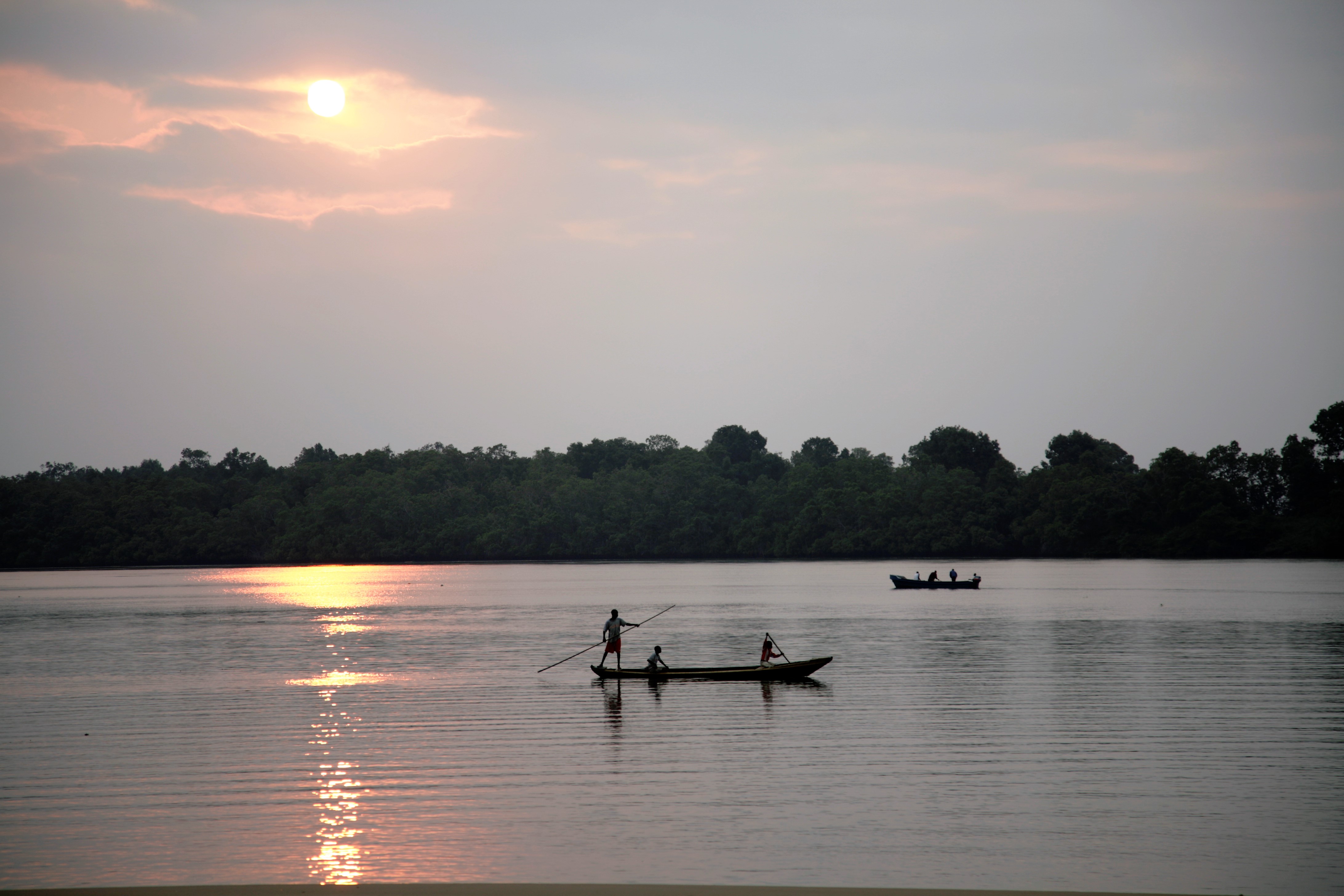
Adventurouspirits
Luanda is a city of 5 million live; in a city originally built for 500,000. Most of the oil wealth that Angola has earned has ended up in Luanda. New buildings are sprouting up in the downtown core and BMWs, Mercedes Bens and Porsches creep along the clog the traffic choked roads along with thousands of diesel belching trucks and thousands of dilapidated wrecks. There are few street signs or addresses on houses. It is complete chaos but somehow life goes on without much fuss. Luanda is the 4th most expensive capital city in the world.
Enlarge

Adventurouspirits
Enlarge

Adventurouspirits
Angola has cheap, safe and accessible oil but it does not have cheap, safe or accessible drinking water. A country with excess oil and a wealth of diamonds and yet the majority of Angolans have no or limited access to clean drinking water or adequate housing.
Enlarge
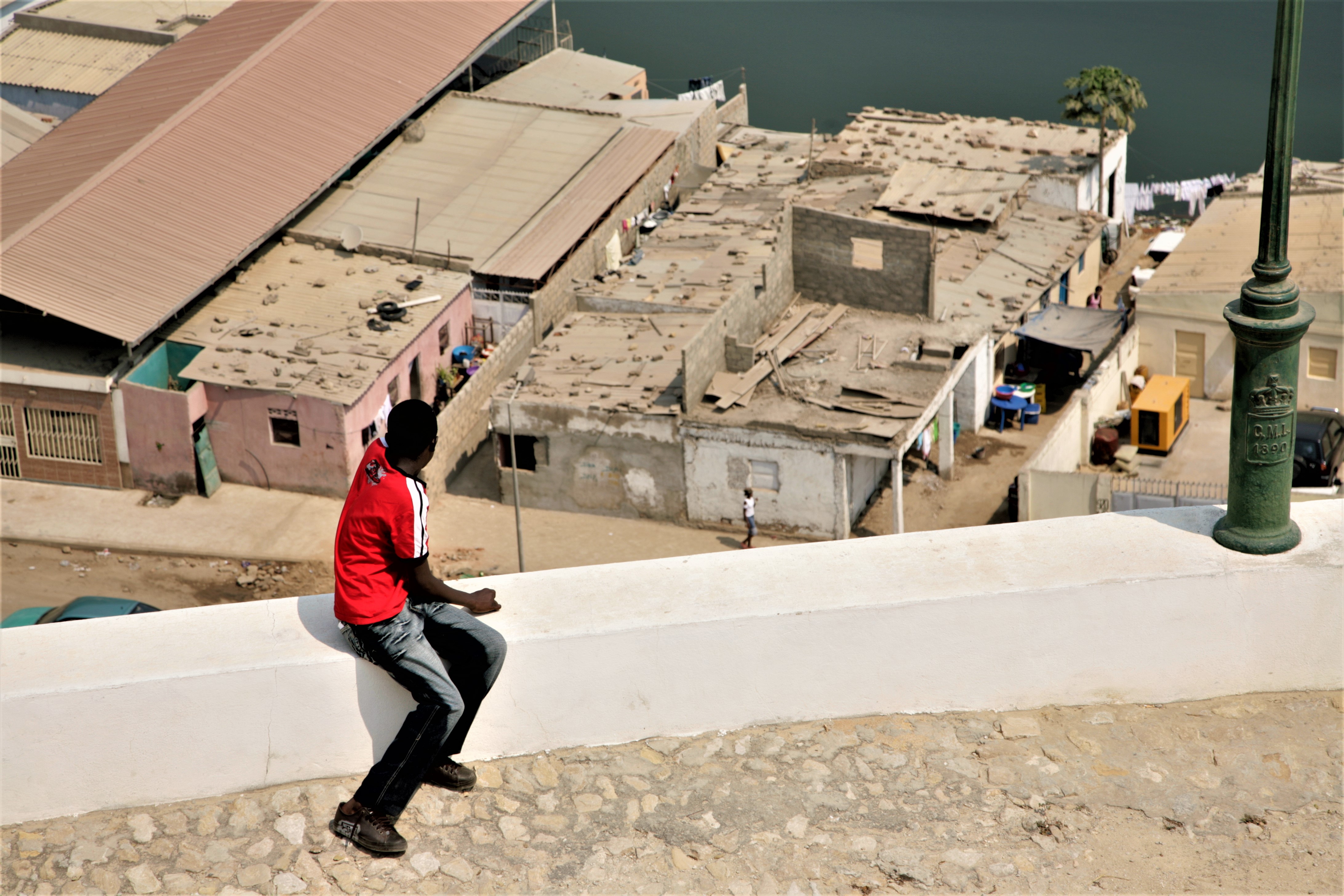
Adventurouspirits
We headed towards the isthmus where the Luanda Yacht Club is located where we told we could camp.
Enlarge
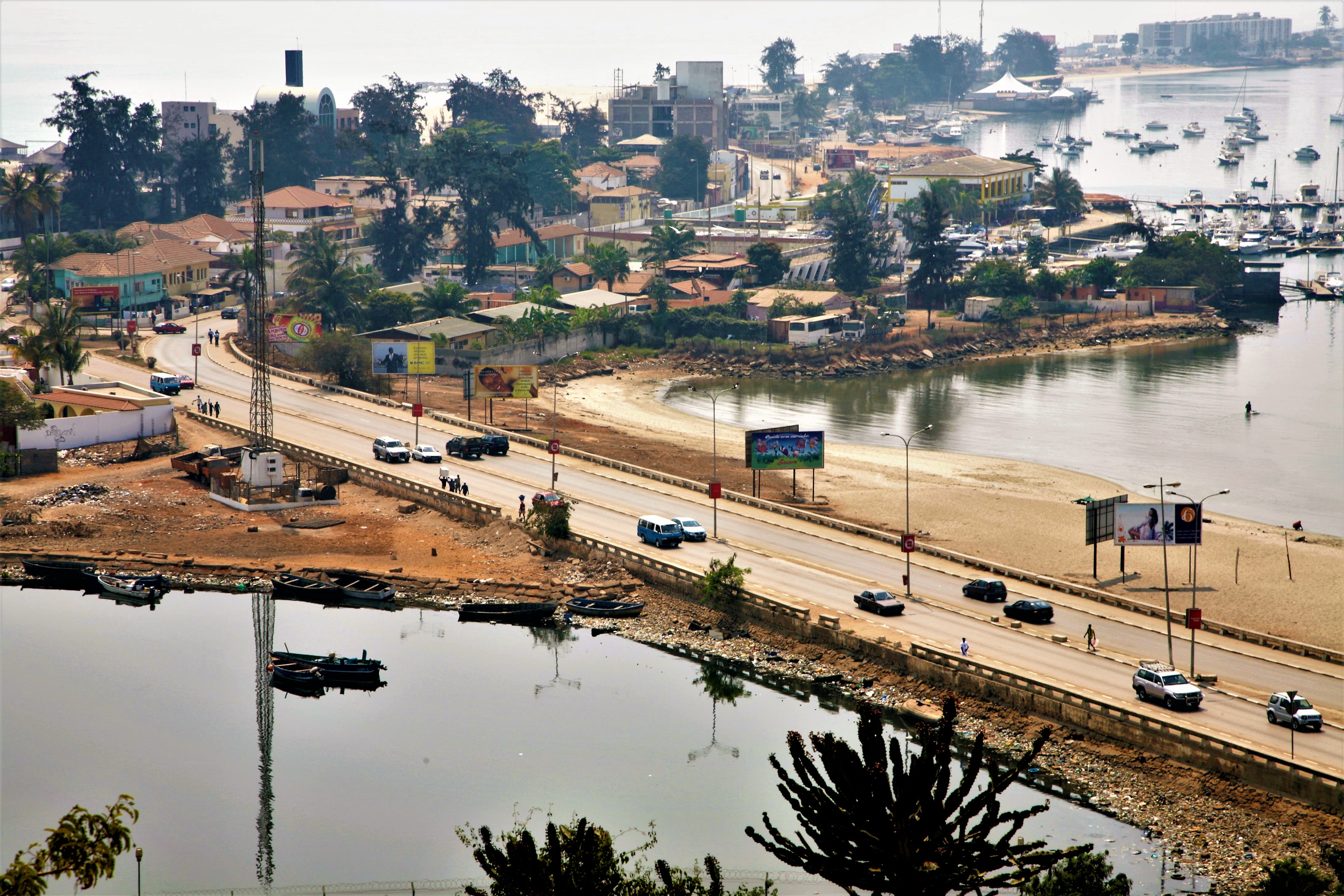
Adventurouspirits
The campsite, an empty bare red soil parking lot overlooked boats moored alongside, displaying some of the wealth which oil production has brought to some of Luanda’s inhabitants.
Enlarge
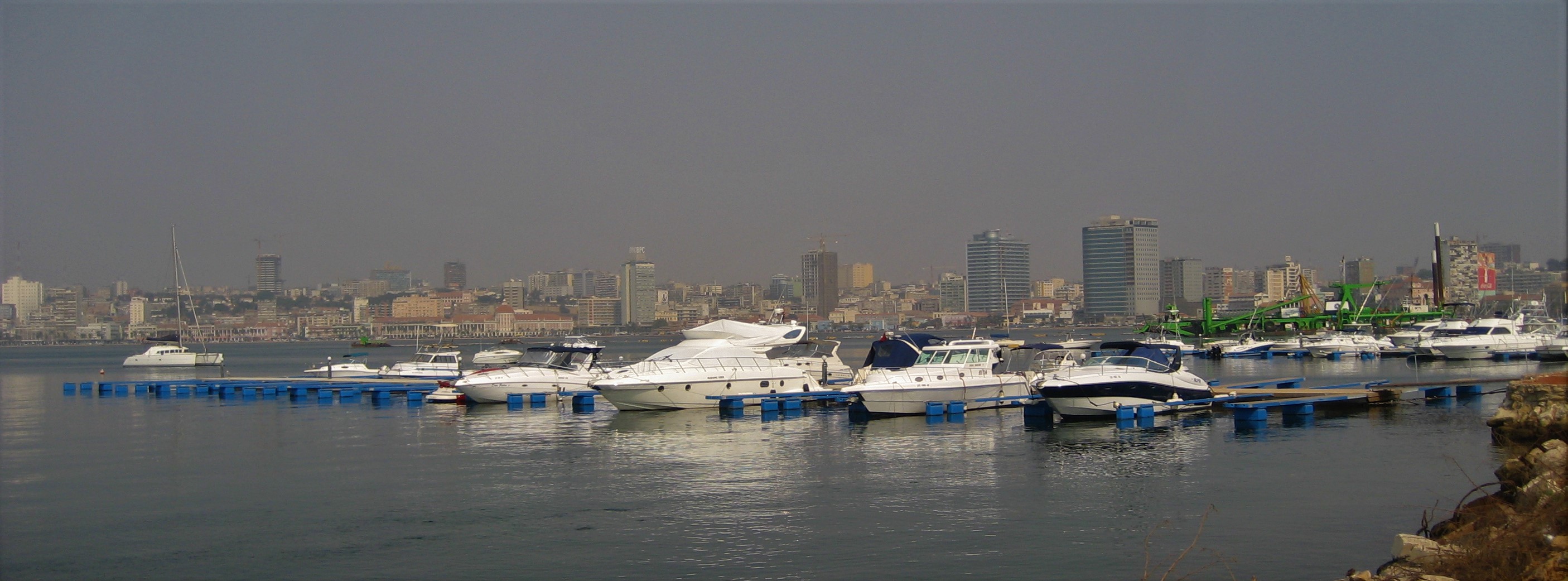
Adventurouspirits
Nearby are a number of expensive restaurants where expats dine on expensive dishes and imported wines.
Enlarge

Adventurouspirits
We spent 9 days in Luanda, getting visas, exploring Luanda on foot and by car, and meeting wonderful people. The Honorary Canadian Ambassador Alan and his wife Julia were amazing kind and generous to us during our stay in Luanda. We are truly indebted to them.
Enlarge

Adventurouspirits
At the historic fort Angolan’s study their ancient and modern history. The Portuguese occupied Angola in 1465 and left in 1974 after fighting a bitter civil war with guerrillas fighting for their independence.
Enlarge
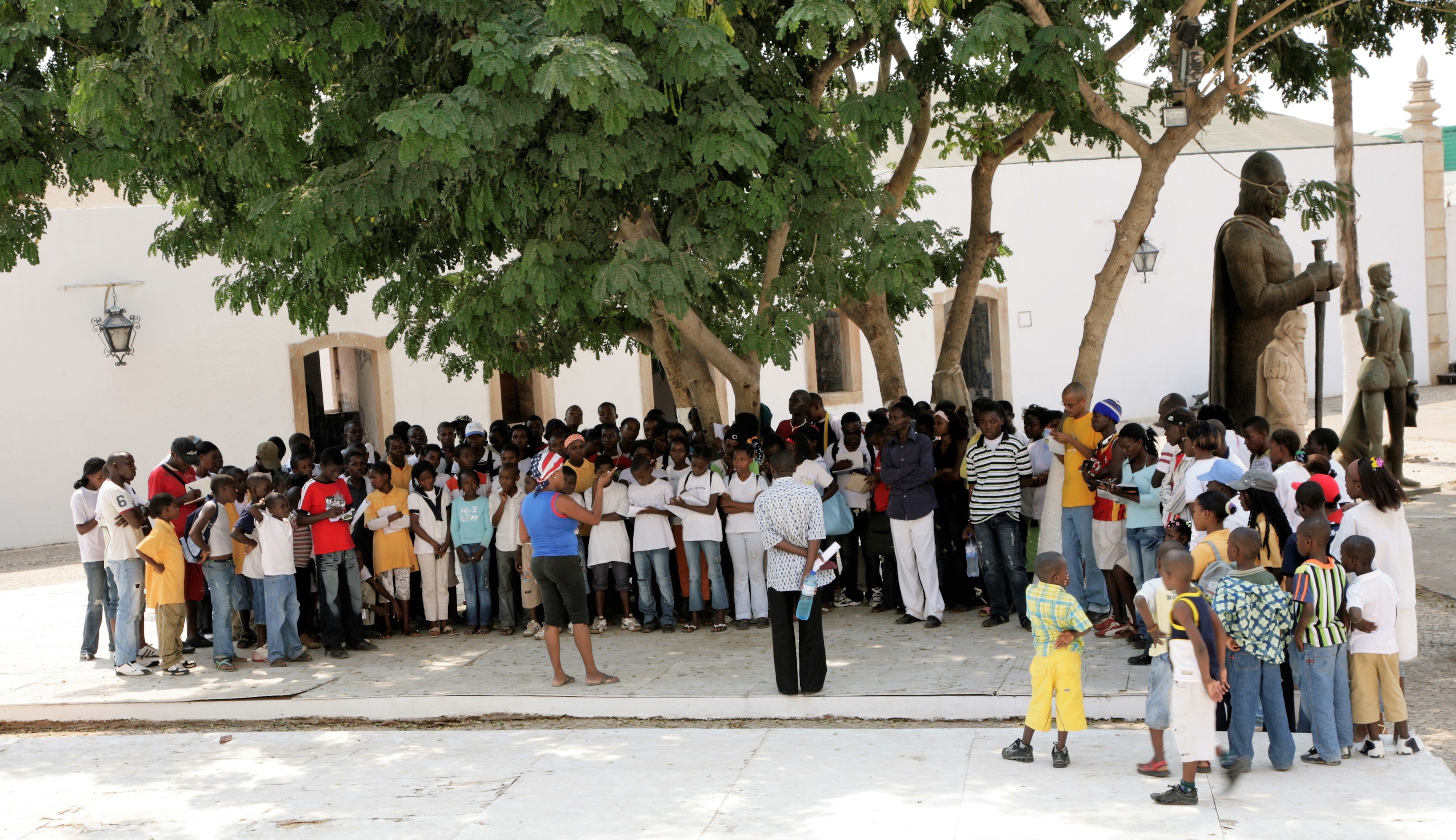
Adventurouspirits
Enlarge
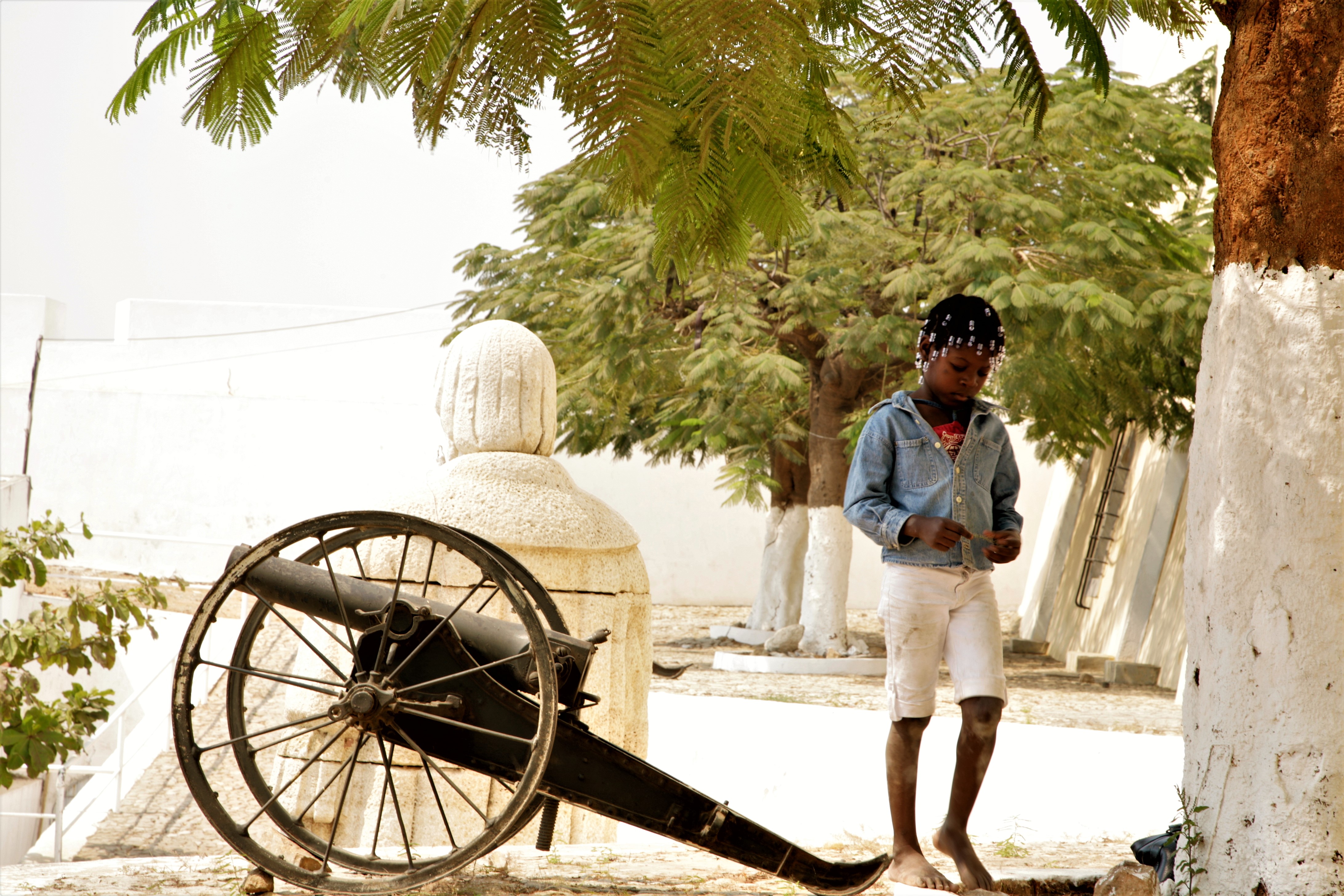
Adventurouspirits
After the Portuguese fled Angola a vicious civil war between opposing political parties erupted. One side (MPLA) was supported by the Russians and Cubans whilst the other (UNITA) by the Americans and South Africans. This lasted for forty years with many deaths and injuries suffered by both sides.
Enlarge
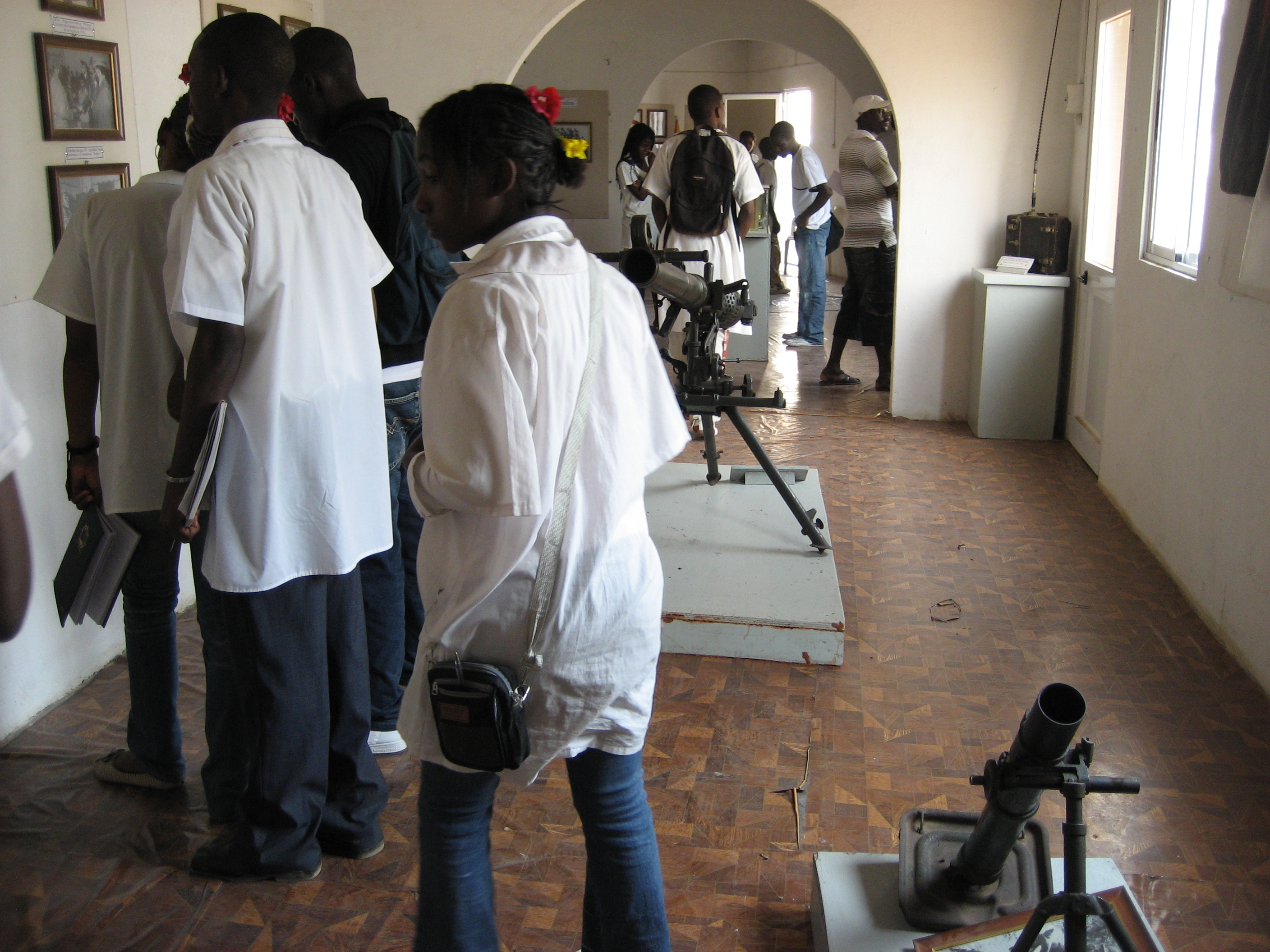
Adventurouspirits
We spent 9 days in Luanda, getting visas, exploring Luanda on foot and by car, and meeting wonderful people. The Honorary Canadian Ambassador Alan and his wife Julia were amazing kind and generous to us during our stay in Luanda. We are truly indebted to them.
Enlarge

Adventurouspirits
They even offered us a room at their residence so that we could escape from the inadequate parking lot at the yacht club. A local deaf mute guarded and cleaned our vehicle continuously earning a few dollars in the process.
Enlarge

Adventurouspirits
Enlarge

Adventurouspirits
Once we had all our visa, we decided that finally it was time for us to head north for the Democratic Republic of Congo. We planned to reach N’Zeto on the first day and Noqui/Matadi border via Tomboco on the 2nd day.
Tom packed the car and after farewells to Julia, Allan and Rebecca we leave. Two hours and 11 km later, we finally leave Luanda and joined the road leading to Cacuaca. We got lost in one of the large slums surrounding Launda on the way out of the city. Angola does not have roads it has potholes and tracks. The journey is 8 hours to N’Zeto. We do not measure distance in kilometers rather it in time. We drive always staying on the tracks: red flags gently flutter alongside the road reminding us of the danger of landmines. Detouring around destroyed bridges adds hours to the journey.
Enlarge

Adventurouspirits
Enlarge

Adventurouspirits
Enlarge

Adventurouspirits
N’Zeto is one of the neglected villages in the north, it’s buildings still scarred with bullet holes.
Enlarge

Adventurouspirits
We found accommodation in a motel which was housing Chinese road construction workers. On chatting with them we discovered that they were mostly prisoners who had committed minor offences in China and were serving out their sentence working abroad for the Chinese government.
Enlarge

Adventurouspirits
We left at 7:30 am the following morning hoping to Make Noqui before dark. The countryside is lovely although a lot of it is on fire. Villages more established. Roads like mogul tracks through forests, a large blue snake slithers across the road.The roads were so bad and the going so slow that we broke our rule and drove in the dark. This was due to the fact that there were grass fires so we would have had to take turns sleeping in case we were caught up in a fire.
Enlarge

Enlarge

Adventurouspirits
Enlarge

Adventurouspirits
It was surreal driving in the pitch dark on the worst of tracks through northern Angola heading for the DRC. Every kilometre never seemed to end, they were the longest km we had ever driven. Finally we pulled into a dimly lit Noqui and managed to convince the local maternity hospital to allow us to camp in their grounds.
Enlarge
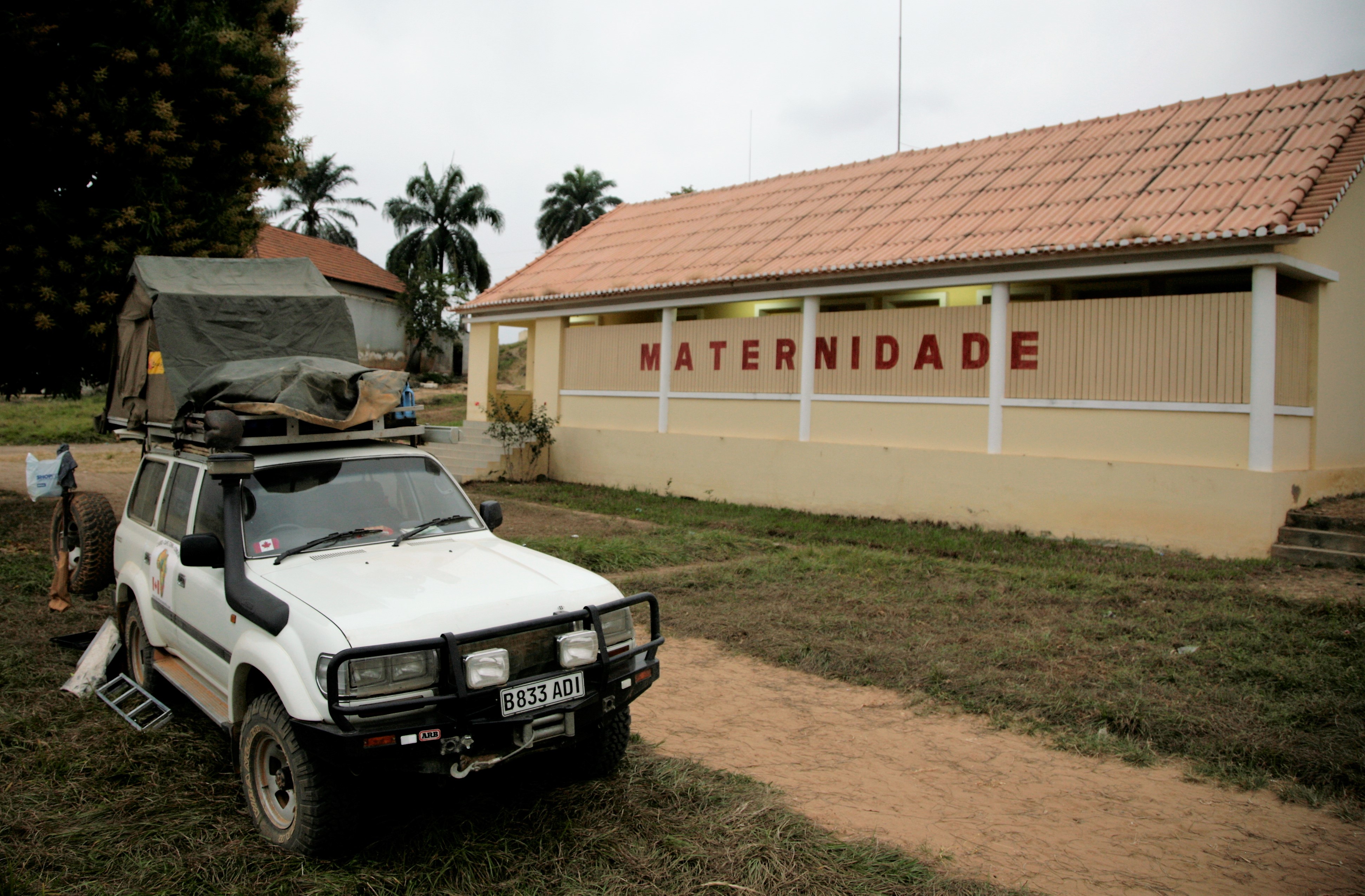
Adventurouspirits
The sun arose and we got our first glimpse of the mighty Congo River separating Angola from the DRC.
Enlarge
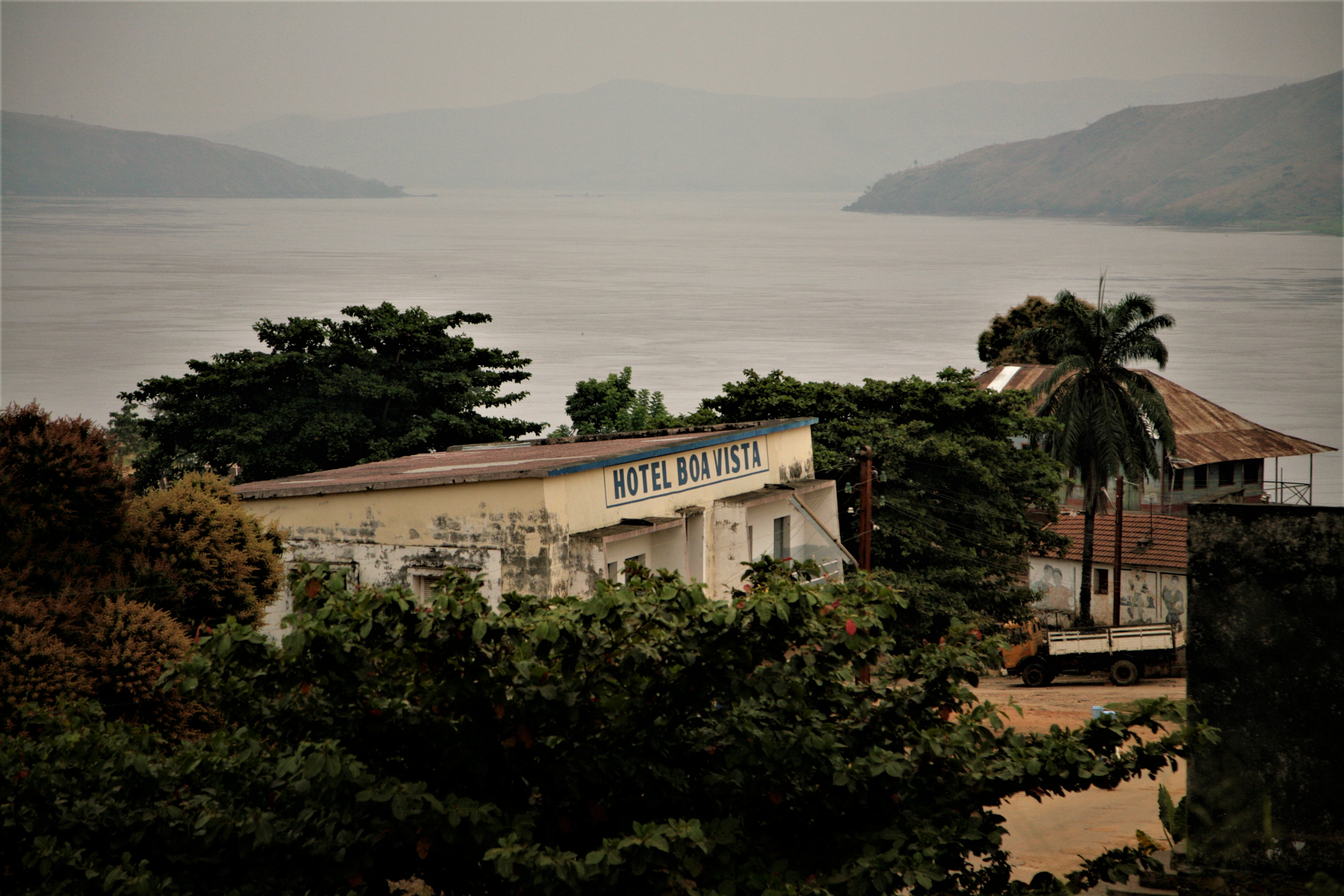
Adventurouspirits
The strain of driving through Angola shows on my face as I enjoy my morning coffee.
Enlarge
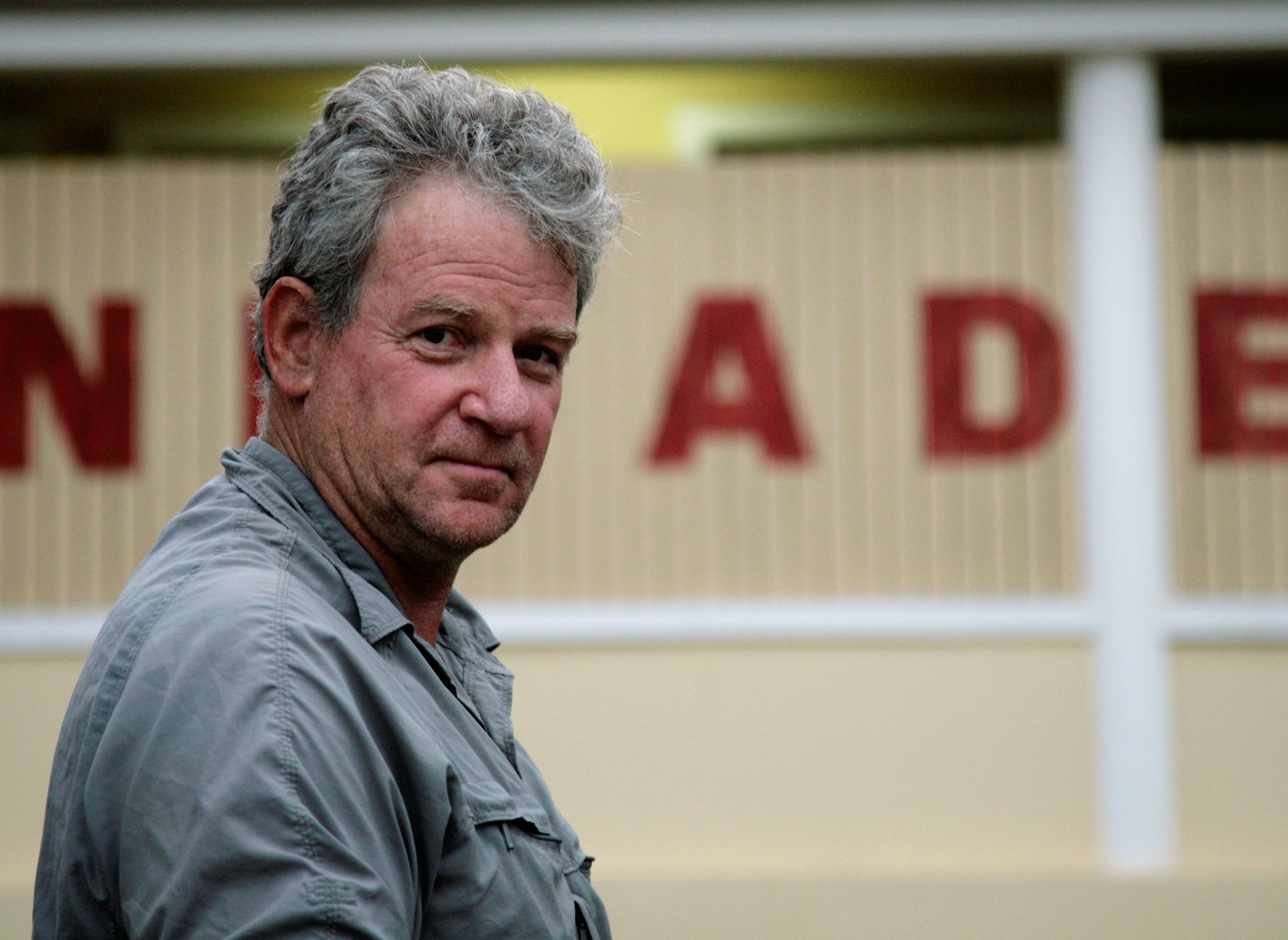
Adventurouspirits
Angola was the most difficult country we have traversed so far. It’s people have suffered tremendously. As we say farewell we wish them well. They deserve better.
Enlarge

Adventurouspirits
Enlarge
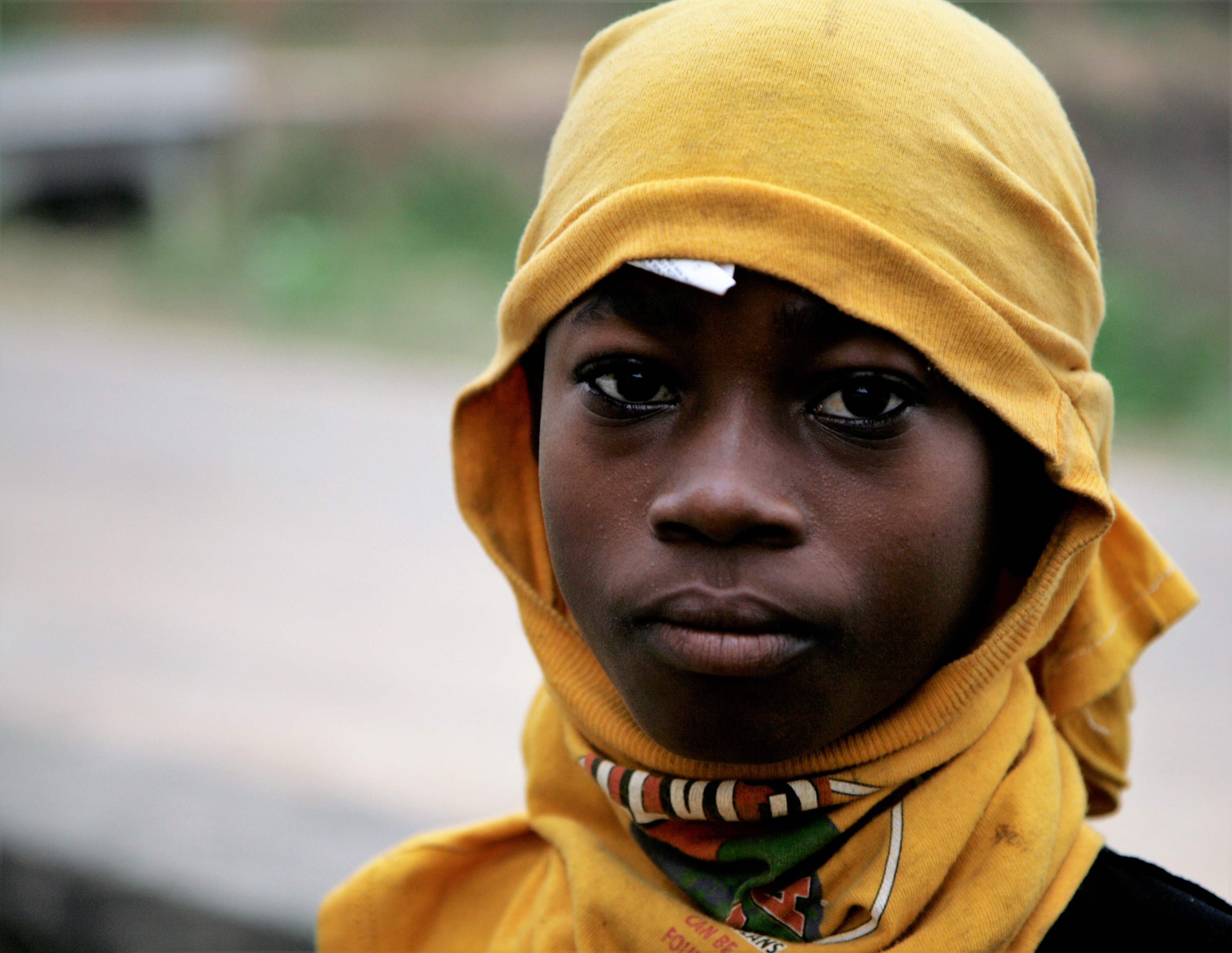
Adventurouspirits
Enlarge
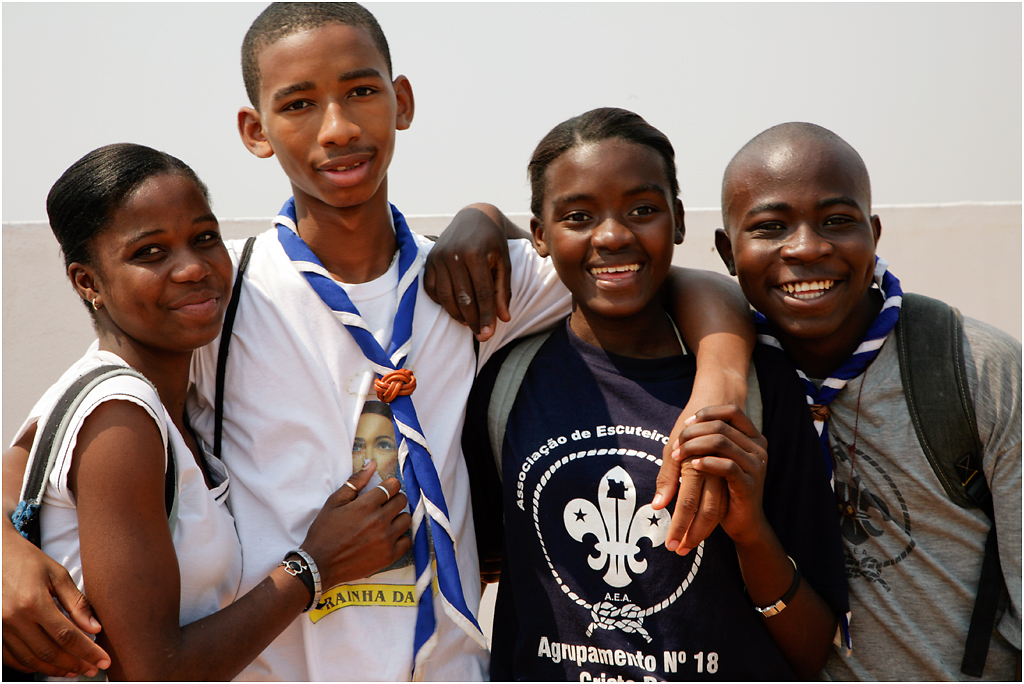
Adventurouspirits

Lovely pictures of Angola. Worked in Luanda for 4 years between 2006-10 Visited Lobito, Luanda, Cabinda and various small towns and villages